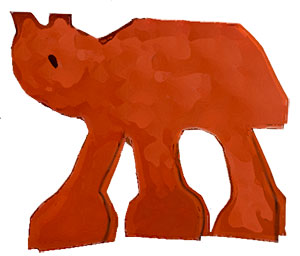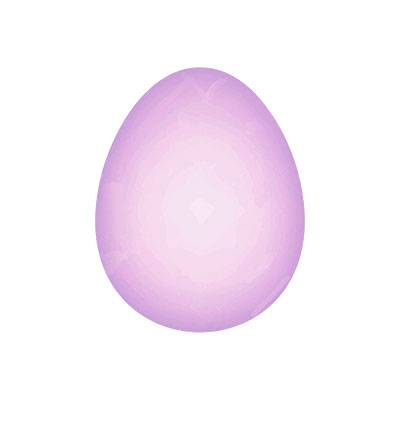Science at Home with Dr. Christine Lattin
Join Dr. Christine Lattin in these two science experiments for kids to try at home.
Bugs with Big Feet
Have you ever seen bugs like water striders that walk on top of the water? They are
able to do this because water has a lot of surface tension, which means that the surface
of the water is very strong and elastic. In this experiment you will make your own
“water strider” that will be able to glide on top of the water.
do this because water has a lot of surface tension, which means that the surface
of the water is very strong and elastic. In this experiment you will make your own
“water strider” that will be able to glide on top of the water.
What you'll need:
Index cards or sturdy pieces of card stock (NOTE: this won't work with normal paper!)
Scissors
Crayons
Scotch tape
A basin, sink, or tub full of water
The Experiment
Step one: Fold your card or card stock in half and draw a shape on it. Make sure your bug has big feet, like a real water strider!
Step two: Carefully cut out your bug with the scissors. Fold the feet out. Decorate it if you’d like with the crayons!
Step three: Go to your basin or tub full of water. Carefully place your water strider on the surface of the water. It should be “walking” on the water just like a real water strider! You might even see little dimples in the water where the weight of your bug pushes against the water’s surface.
Step four bonus: Many water striders have feet with special hairs that repel the water. If you want to make your water strider have “water repelling” feet, you can coat them with a layer of butter. Water and oils like butter repel each other!
The Follow-up:
You've made a basic water strider with big feet, and part of the reason it stays on top of the water is because the weight of the bug is distributed over a large area of water underneath the bug’s big foot. This is the same reason you can walk on top of snow using large snowshoes, or big feet like a snowshoe hare! What happens if you make another bug with small feet? Because the weight of the bug is pushing down over a smaller area, a smaller bug is more likely to sink. Another way to make a bug more likely to sink is by making it heavier, by taping pennies to it. If the weight of the bug is too heavy, the surface tension of the water isn’t strong enough to support it and it will sink.
An Egg...with no shell
Have you ever seen an egg without a shell? You can make one using the three simple ingredients listed above. This is because eggshells are mostly made of a substance
called calcium carbonate, which is also found in coral reefs, seashells, and even
pearls! Strong acids like white vinegar can easily dissolve calcium carbonate, as
you will see.
simple ingredients listed above. This is because eggshells are mostly made of a substance
called calcium carbonate, which is also found in coral reefs, seashells, and even
pearls! Strong acids like white vinegar can easily dissolve calcium carbonate, as
you will see.
What you'll need:
A raw egg
A clear cup or jar
White vinegar (at least 16 ounces)
The Experiment
Step one: Carefully place the egg in the cup or jar.
Step two: Pour the vinegar into the glass or jar. Make sure the egg is covered with liquid!
Step three: Observe! Check your egg after an hour or so. Do you see little bubbles on the outside of the egg? Those are carbon dioxide bubbles, a byproduct of the reaction between the vinegar and eggshell. Science is happening!
Step four: After a day or so, check your egg again. Try removing it from the jar by (very carefully!) pouring of the vinegar and (very carefully!) catching the egg in your hand. Is the shell gone yet? You might be able to rub of the last of it as a white powder with your fingers. If your eggshell still feels pretty strong, put it back in your cup or jar, pour in some fresh vinegar, and check it again in a day.
Step five: Enjoy your “naked” egg!
The Follow-up:
You might notice a few things about your egg. First of all, it's still in an egg shape! That’s because bird eggs have strong, stretchy membranes on the inside of the shell that help to hold everything in place. These membranes are “semipermeable,” which means some very tiny things (like water molecules) can pass through them. If you put your naked egg into a glass of pure water colored with food coloring, the egg will swell up with water and turn the color of the food coloring! Another fun thing to do with your naked egg is to bounce it in the sink from high and higher heights until it breaks.
Get to know Dr. Christine Lattin! She is an assistant professor of biological sciences at LSU! Dr. Lattin studies hormones, the brain, and behavior in wild songbirds to understand how to help animals successfully choose mates, raise their young, escape from predators, and survive harsh winters and other challenging conditions.